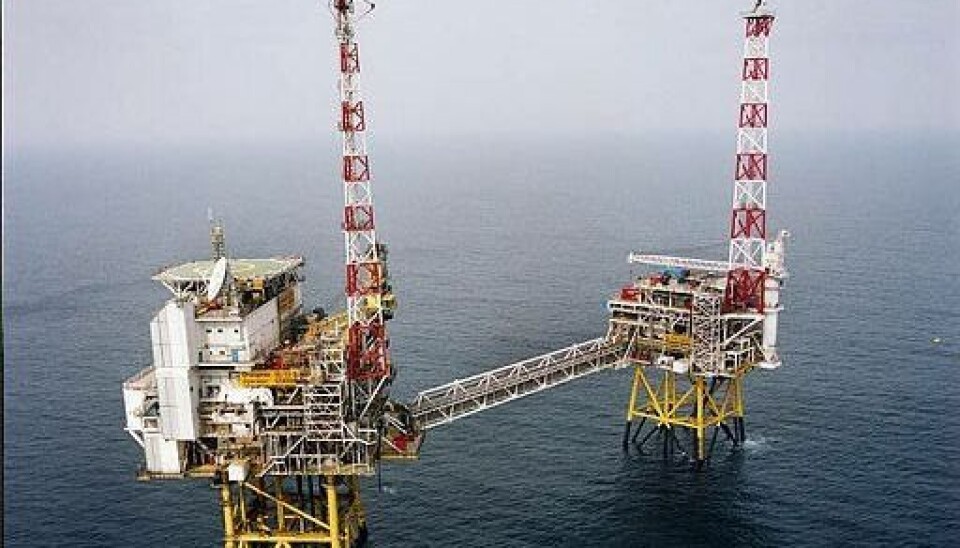An article from Norwegian Geotechnical Institute

Proof: Monster Waves are real
Monster waves – also known as rogue waves - with wave heights up to 30 meters was once only something sailors could only hope to live to tell about. But when oil platform Draupner E in the NorthSea was hit by a nearly 26 meter high wave recorded by instruments onboard, scientists agreed that the monsters really do exist.
Denne artikkelen er over ti år gammel og kan inneholde utdatert informasjon.
»Draupner E had only been operating in the North Sea for around half a year, when a huge wave struck the platform like a hammer. When we first saw the data, we were convinced it had to be a technological error « says Per Sparrevik. He is the head of the underwater technology, instrumentation and monitoring at the Norwegian NGI.
But the data was not wrong. When NGI looked over the measurements and calculated the effect of the wave that had hit the platform, the conclusion was clear: The wave that struck the unmanned platform Draupner E on 1 January 1995 was indeed extreme. This has made it one of the world’s most famous waves with no less than 175,000 hits on Youtube.
The monster wave came much unexpected to both the petroleum industry as well as to wave scientists, and it triggered extensive research efforts because of its extreme size compared to any waves before and after it.
Today, the knowledge gained from the Draupner E experience is used in wind turbines research among other research areas.
26 meter high wave

Before Draupner, wave researchers believed that the distribution of wave heights roughly followed the famous bell-shaped Gaussian curve. According to this theory, extreme waves such as this one would occur ones every 1,000 or 10,000 years.
But when Draupner E. was hit by a nearly 26 meter high wave, which was very surprising in a sea that otherwise had a significant wave height of 12 meters, the Gaussian theory was refuted. Significant wave height is the average of the highest third of waves within a 20 minute period.
»Later measurements have confirmed that monster waves occur much more frequently than the Gaussian theory suggests. Therefore, wave researchers have started using non-linear theories when they calculate wave heights« says Ph.D. James Strout, head of the Department of Instrumentation and Monitoring at the NGI.
Oil Platform with Instruments
The reason why the wave was recorded at all is that the Draupner E. was the first major oil platform of the jacket-type (with a fixed steel jacket deck) in the world that was bolted to the seabed with bucket foundations instead of piles.
Bucket foundations and suction anchors was a new type of anchorage that up till then had only been used on smaller buoys. But come the 1990s, this technology had been tested vigorously and Statoil decided to use it for bigger constructions, such as the Draupner E.
As a precautionary measure, the platform was equipped with a range of instrument that continuously would check the platform's movements and that the foundations remained in place during heavy winter storms. It was these instruments that for the first time documented that monster waves really do exist.
The greatest concern in regards to the construction was related to the attachments in the ground or the so-called "shake down" due to cyclic pressure during storms. Instruments on Draupner E. registered wave height, slope, hold, the pressure of the bucket foundations, tension in the platform pillars and the acceleration on deck and foundations. The monster wave was registered by all the different sensors.
Pressure gauges in the bucket foundations registered a large force that was trying to force the platform up over itself facing the wave direction, while the corresponding instruments in the back of the platform recorded a great force down.
The accelerometers on deck and on the foundation registered a sudden movement, powerful at the top, but moderate on the bottom. A laser-based wave height measurer confirmed that the platform's upper part had been hit by a monster.
Although the waves were large, both the suction anchors and platform stood its ground. Later calculations showed that the suction anchors moved about 10 millimeters horizontally and 5millimeters vertically, well within its intended span. In addition to this, the foundation could have deal with significantly greater wave forces without losing its ground too. The steel frame would probably have caved in before the platform was overturned because of the foundation failing.
Crew safe inside
In all likeliness, monster waves occur during storms when slower waves are swallowed by faster waves which allow each of the two wave type’s heights to be added onto each other. It is believed that the monster waves have caused numerous shipwrecks over the years, especially those where ships have just disappeared without sending distress calls.
Oil workers on the Draupner platform did not feel much of the monster wave, because all work on deck had been stopped at 15 that day due to the storm. When the wave hit, the crew were all indoors at the neighbor platform, Draupner S., which was sheltered by Draupner E.
There was minor damage done to the equipment at Draupner E’s lowest deck, and that was all. Thus, the bucket foundations proved that the technology is reliable and can hold strong against unknown forces.






























